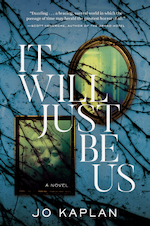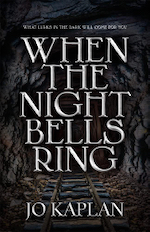For me, the biggest emotional challenge of being a writer is also my biggest emotional challenge in general, which is perfectionism.
My standards for myself are often unreasonably high, and the (obvious) inability to live up to these unrealistic expectations can lead to anxiety, depression, self-doubt, etc.
This certainly spills over into creative work, through comparing myself to better writers and the challenge of dealing with rejection, which is something all writers have to face.
How I’ve Learned to Deal with Rejections
Over the years, I’ve come to learn that rejection usually just means one particular piece wasn’t right for one particular editor at one particular point in time.
Publishing is a tough nut to crack, and even writers who are successful continue to get rejections. But the more rejections I accumulated, the less each one stung, and when I started accumulating successes, too, that helped balance out the bitter feelings of not being good enough.
Now when I get rejections, I can usually just let it roll off my back, and instead of seeing it as a failure see it as an opportunity to try again.
Writers and Exercise: A Little Bit Goes a Long Way
Being writer is, admittedly, a good excuse for being sedentary. That’s by biggest physical challenge.
I know I should get up and exercise every so often, but so much of what I do relies on sitting down in one place, so it’s easy to fall into that comfort zone and neglect the kind of exercise and stretching that I know makes me feel better.
I struggle with this also because I am admittedly lazy!
For a time, I was doing the 7-minute workout, which is a great way for unathletic people like me to spend just a few minutes a day doing key exercises. Even a little bit goes a long way. Still, I often don’t find myself motivated to get moving, so that’s something I’m still working on.
The one physical activity I do consistently is playing my cello. For athletes, that may not sound much like an exercise since it’s done sitting down, but it’s still intensely physical for certain muscles. Plus, I get an adrenaline high once I’ve just finished a 3-hour rehearsal, and it’s fun!
We Learn Best By Teaching
Teaching creative writing is a total blast. I feel so lucky that I’ve had the opportunity to take on these kinds of classes in my teaching because they are some of the most rewarding and fun classes to teach.
I often become inspired by my students, who demonstrate such creativity and insight in the works they produce. It also allows me another place where I can talk through writing concepts and work them out for myself.
I think it’s pretty common knowledge now that we often learn best by teaching, and I would say that’s true for me. Finding ways to articulate why certain writing strategies work well has helped me to better understand the craft.
The flipside to this is that I can also get burned out from teaching. When I’m constantly grading student writing, it can make it hard to get motivated to work on my own writing—or even continue to stare at words on a screen, for that matter, since my students submit all of their work digitally. This is where summer break helps!
How Playing a Musical Instrument Is Good for a Writer
Playing an instrument is a fantastic outlet for a writer to be creative in a completely different sort of way, because it is an activity without words—opposite to writing, in that sense, which is all words—and purely physical and emotive.
It helps me get out of my own head and focus on a wordless activity, which can be really hard to do when I otherwise have a constant internal monologue going.
Playing music shuts down that monologue because I’m focused on all the complex details and how they fit together: the notes, rhythms, bowing style, fingerings (get your mind out of the gutter), dynamics, intonation, key signature, time signature, etc.
I do think sometimes we need to step away from the activity of writing in order to be refreshed and to want to come back to it.
The Types of Book Marketing I’ve Found Most Rewarding
Let me talk about the kinds of marketing that I’ve found most personally rewarding.
Lately, that’s been in-person conferences and book fests. Now, as an introvert, I admit I was pretty content to spend the majority of the pandemic isolating at home, without the anxiety required to go out and interact socially. But I’ve recently realized just how much I missed the chance to engage, in person, with like-minded people.
It’s fun because events like that are not just about marketing; rather, getting your name out there is a happy side-effect.
The other aspect of marketing I enjoy most is writing my monthly newsletter. I’ve heard newsletters are the best way for writers to regularly touch base with their readers, but again, I don’t really know for certain whether my newsletter has been successful as a marketing tool.
What I do know is that it’s fun when a newsletter has a theme, and mine is “Books & Booze,” so each month I pick a book I recently read and highly recommend, and I pair it with a cocktail that somehow fits with the mood, theme, location, or some other aspect of the book. I get a kick out of coming up with these creative pairings!
I guess there’s a third thing I like to do related to marketing, and that is design things like bookmarks and promotional images. I don’t have a design background, but there are enough online platforms now that allow amateurs like me to create some lovely designs.
I love handing out bookmarks I created, knowing it will come in handy for someone and may spark their interest in my book!
To sum up my thoughts on the matter: I think if you’re going to engage in marketing, you have to find some way to make it enjoyable.
3 Things a Story Needs to Be Picked Up By a Traditional Publisher
I am by no means the ultimate authority on this question, but here are three things I think are crucial for getting a book noticed:
- A good hook
- Engaging characters
- A sense of pacing
First, the story needs some kind of hook. That is, a premise or concept you can state in an elevator pitch that will get someone’s attention.
Then, I think a story will fall flat without engaging characters. They don’t have to be likeable, mind you, but they should be engaging.
Finally, a sense of pacing is what pulls the reader along the story, through moments of excitement and pauses. This is what makes it hard for the reader to put it down.
The last one is my greatest struggle, because pacing is such a malleable and tricky thing.
Advice for a Young Writer: RIP
My pithy little bit of writing advice comes with a horror-themed acronym: R.I.P.
Read a LOT! And as you read, find what makes you tick.
Identify what other writers are doing that you love. Then, Imitate those things. There’s no shame in imitation.
Then, Practice writing and writing and writing as you discover your own voice.
* * *
Jo Kaplan is the author of the horror novels It Will Just Be Us (2020) and When the Night Bells Ring (2022). Her short fiction has appeared in a number of publications, such as Fireside Quarterly, Black Static, Nightmare Magazine, Haunted Nights edited by Ellen Datlow and Lisa Morton, as well as two Bram Stoker Award nominated anthologies.
She currently teaches English and creative writing at Glendale Community College.
For more information on Jo and her work, please see her website, and connect with her on Facebook, Twitter, and Instagram.
 It Will Just Be Us: They say there’s a door in Wakefield that never opens…
It Will Just Be Us: They say there’s a door in Wakefield that never opens…
Sam Wakefield’s ancestral home, a decaying mansion built on the edge of a swamp, isn’t a place for children. Its labyrinthine halls, built by her mad ancestors, are filled with echoes of the past: ghosts and memories knotted together as one. In the presence of phantoms, it’s all Sam can do to disentangle past from present in her daily life.
But when her pregnant sister Elizabeth moves in after a fight with her husband, something in the house shifts. Already navigating her tumultuous relationship with Elizabeth, Sam is even more unsettled by the appearance of a new ghost: a faceless boy who commits disturbing acts—threatening animals, terrorizing other children, and following Sam into the depths of the house wielding a knife. When it becomes clear the boy is connected to the room with the locked door, Sam realizes this ghost is not like the others. This boy brings doom…
As Elizabeth’s due date approaches, Sam must unravel the mysteries of Wakefield before her sister brings new life into a house marked by death. But as the faceless boy grows stronger, Sam will learn that some doors should stay closed—and some secrets are safer locked away forever.
Available at Penguin, Amazon, and wherever books are sold.
 When the Night Bells Ring: Don’t awaken what sleeps in the dark.
When the Night Bells Ring: Don’t awaken what sleeps in the dark.
In a future ravaged by fire and drought, two climate refugees ride their motorcycles across the wasteland of the western US, and stumble upon an old silver mine. Descending into the cool darkness of the caved-in tunnels in desperate search of water, the two women find Lavinia Cain’s diary, a settler in search of prosperity who brought her family to Nevada in the late 1860s.
But Lavinia and the settlers of the Western town discovered something monstrous that dwells in the depths of the mine, something that does not want greedy prospectors disturbing the earth. Whispers of curses and phantom figures haunt the diary, and now, over 150 years later, trapped and injured in the abandoned mine, the women discover they’re not alone . . . with no easy way out.
The monsters are still here—and they’re thirsty.
Available at CamCat Books, Amazon, and wherever books are sold.

